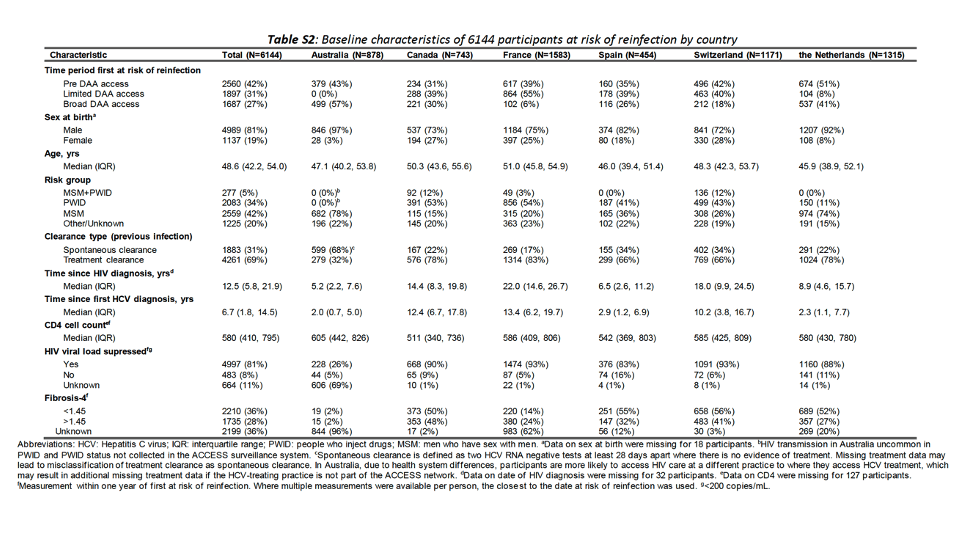| |
PWH HCV Reinfection Increased as % of New HCV Incidence Despite Decline in Reinfection
|
| |
| |
Download the PDF here
Download the PDF here
Changes in incidence of hepatitis C virus reinfection and access to direct-acting antiviral therapies in people with HIV from six countries, 2010-19: an analysis of data from a consortium of prospective cohort studies
"Incidence of HCV reinfection declined in people with HIV after the introduction of direct-acting antivirals and was 28% lower .....Most incident infections could be attributed to primary infections in all calendar years (figure 3). [but] Overall, the proportion of HCV incident cases due to reinfection was stable between 2010 and 2015 and increased from 23% in 2015 to 41% in 2019. This increase was consistent across all countries (appendix p 15)..... Decreasing HCV reinfection and combined (primary and reinfection) incidence following the expansion of access to direct-acting antivirals are reassuring for HCV elimination efforts, suggesting that reinfection is not a major threat to the achievement of the WHO elimination goals.....suggesting that HCV infections are concentrating in a smaller group of previously infected individuals. This highlights the importance of continued monitoring in people at risk of reinfection, and interventions to reduce risk where possible.......This highlights the need for frequent RNA monitoring in individuals who are at continued risk of HCV after treatment. Although frequent testing is recommended for people with HCV-related sexual and injecting risk behaviours, the optimal frequency of testing remains unknown, and costs and limits on the number of tests reimbursable per year remain barriers to frequent monitoring in some countries....The rapid reduction in incidence of reinfection during the period of limited access is likely to be partly attributable to the greater numbers of people with severe liver disease in the group at risk of reinfection during that period. These individuals might be less likely to engage in ongoing behaviours associated with HCV risk and therefore have a lower risk of reinfection. This is consistent with findings from previous research that found low rates of reinfection in the early years of access to direct-acting antivirals, when many countries restricted access to people with moderate and severe liver disease......The decline in the incidence of HCV reinfection was lower than the decline in primary infection incidence over the same period (28% vs 49%)."
Restrictions on treating acute HCV remained in most countries and might have led to delays in treatment and loss to care. Larger declines in HCV incidence due to a treatment-as-prevention effect might be possible if these restrictions are removed.

| |
| |
| |
|
|
|